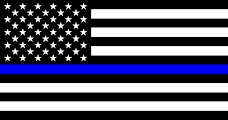Monday, April 01, 2013
Gunfight
Below are some excerpts from Gunfight: The Battle over the Right to Bear Arms in America by Adam Winkler (Norton, 2011).
Despite the utopian dreams of some gun control advocates, guns in America aren't going anywhere ... Nevertheless, disarmament was the motive behind the D.C. laws challenged in the Heller case. The D.C. city council hoped that its ban on handguns would trigger a nationwide movement to eliminate civilian ownership of guns. The folly of its idealism was highlighted when, a decade or so after enactment of its strict gun laws, the District came to be known as the "murder capital of America." ... In the absence of any short-term hope of disarmament, gun control extremists throw their support behind poorly designed and predictably ineffective reforms. The statistics that clearly suggest bans on handguns and assault weapons don't reduce crime—or even the number of handguns and assault weapons in circulation—don't seem to matter. [p. 10]
Few people realize it, but the Ku Klux Klan began as a gun control organizations; after the Civil War, the Klan and other violent racist groups sought to reaffirm white supremacy, which required confiscating the guns blacks had obtained for the first time during the conflict. To prevent blacks from fighting back, the night riders set out to achieve complete black disarmament. In the 1960s, race was also central to a new wave of gun control laws, which were backed by liberals and even some conservatives, like Ronald Reagan. Enacted to disarm politically radical urban blacks, like the Black Panthers, these laws sparked a backlash that became the modern gun rights movement—a movement that ironically, is largely white, rural, and politically conservative. [pp.13-14]
Nelson "Pete" Shields III, one of the founders of Handgun Control Inc.—later renamed the Brady Center to Prevent Gun Violence—argued for eliminating all handguns. "We're going to have to take this one step at a time ... Our ultimate goal—total control of all guns—is going to take time." The "final problem," he insisted, "is to make possession of all handguns, and all handgun ammunition" for ordinary civilians "totally illegal." Sarah Brady, who serves as chair of the Brady Center, argues that "the only reason for guns in civilian hands is for sporting purposes," not self-defense, and supports the creation of a national gun licensing system in which only people with government approval can have a gun. Self-defense, the core reason why many people in America own guns, would not be a proper basis for government approval to be gra.[p. 35]
Used to losing battles over gun control, gun controllers latch onto any proposal popular enough to make it through the legislature—usually right after some school shooting or other tragedy. Whether or not a proposed law will actually curb gun deaths is irrelevant; gun control extremists will stand behind it. ... Consider the federal gun ban on so-called assault weapons, adopted in 1994 during the Clinton Administration. The controversy flared up a few years earlier, when Josh Sugarmann, founder of the pro-gun control Violence Policy Center, published a study entitled "Assault Weapons and Accessories in America." Sugarmann called for a ban on guns he termed assault weapons—a name derived from a German World War II-era battle rifle called the Sturmgewehr, or storm rifle. ... Machine guns have been heavily regulated in the United States since the 1930s [civilian ownership of new machine guns has been illegal since the 1986 passage of the Firearm Owners' Protection Act - VFPD], Sugarmann was referring to semiautomatic rifles that just looked like machine guns. A semiautomatic rifle can't spray fire like a machine gun. Instead, when you pull the trigger on a semiautomatic rifle, it fires only one bullet. ... Sugarmann was unusually frank about how public misperception of assault weapons would make banning them the sale of them easier. "The weapons' menacing looks, coupled with the public's confusion over fully automatic machine guns versus semiautomatic assault weapons—anything that looks like a machine gun is assumed to be a machine gun—can only increase the chance of public support for restrictions on these weapons." [pp. 35-36]
... in New Orleans after Hurricane Katrina, law enforcement began confiscating guns from law-abiding people even though police protection was nowhere to be found amid the looting and theft. Often, if there's a crisis, the easy solution is to do away with the guns. [p. 40]
Not only did killing [in Washington, DC] become more common after the [1976 Washington, DC] gun ban, but guns also became a more common way to kill. [p. 42]
Concerning the legislative debate over the federal Gun Control Act of 1968, Winkler writes: Gun rights advocates managed to defeat registration and licensing by arguing that such measures would lead eventually to confiscation of all civilian guns. In the House of Representatives, The Michigan Democrat and NRA board member John Dingell warned his colleagues that the Nazis adopted mandatory registration and used the records to disarm the Jews and political dissidents. This law, too, could be the first step toward a holocaust. While others dismissed the analogy to the Nazis, it didn't help that [US Senator from Connecticut] Thomas Dodd had in fact asked the Library of Congress to provide him with a translation of the German laws of the 1930s when he was drafting his bills ... [p. 252]
Labels: civil liberties, Clintons, guns, politics, quotations, Ronald Reagan




